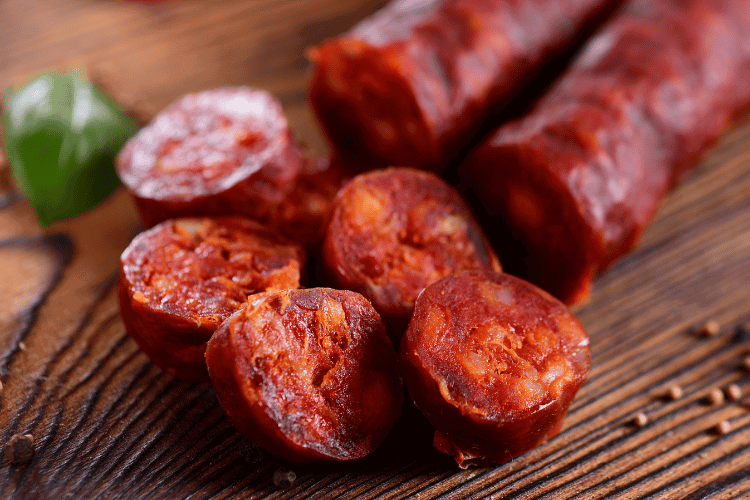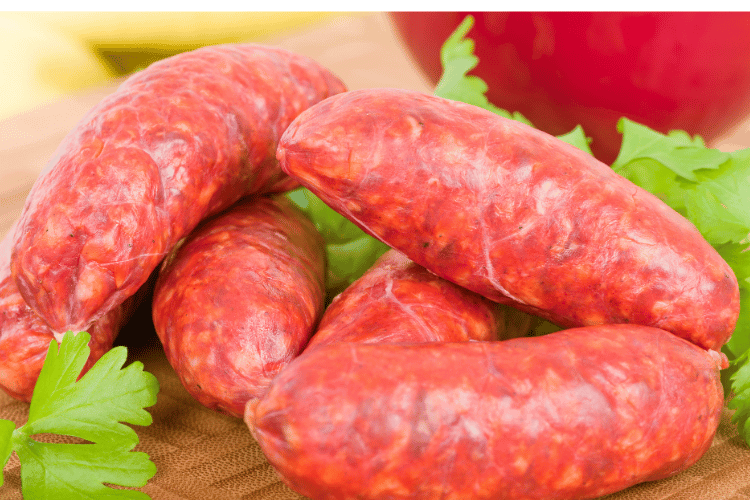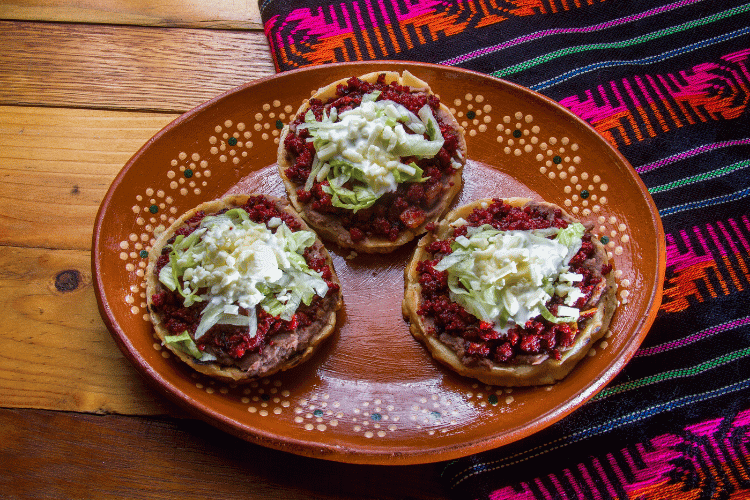You’re invited to a Mexican-style potluck and find a bunch of mouth-watering dishes. One of them is a spicy chorizo enchilada. After taking your first bite, you might be thinking, “Wow, this can’t be good for my arteries,” and you’re right.
Originating in Catalonia, chorizo is a flavorful sausage stuffed with ground pork meat and fat. It’s a greasy delicacy found in Spanish and Mexican cuisines, whether it’s a bowl of classic Spanish chorizo rice or chorizo-sprinkled Queso Fundido.
Luckily, you can take out some of the grease when cooking the spicy meat. Stick around to learn more about why chorizo is so greasy and what you can do about it.

What Are the Contents of Chorizo?
Chorizo is a Mexican and Spanish sausage. It’s made up of ground seasoned pork fat and meat. It’s traditionally seasoned with garlic and paprika, also referred to as “pimenton.” The pork is stuffed in the animal’s large or small intestines.
Now, you might be wondering, “Which part of the pig do butchers use to make chorizo?” It’s either the pork cheek or butt, which are fat-heavy spots.
What Makes Chorizo So Greasy?
Chorizos consist of 14.01% protein, 56.3% water, 3.89% carbohydrates, and 25.8% fat. In turn, the high-fat content in the spicy sausage makes it greasy.
The high-fat percentage makes chorizos have a soft and mushy texture before cooking it. After leaving it on heat and letting it cook, the meat will firm up.
There are other types of chorizo that you can enjoy without cooking. They’re usually cured and already firm and dry. You can slice them and add them to your favorite savory dish.
How to Make Chorizo Less Greasy
Fortunately, you can remove excess grease when cooking chorizo. To do so, start by heating your pan and adding the bits of chorizo.
Break them apart until they all cook. You’ll notice a puddle of grease. All you have to do is drain it, and you’ll have a less greasy chorizo mixture.
Why Chorizo Can Be Unhealthy for You
Since pork chorizo contains lots of fat and sodium, it’s not the healthiest protein option out there. As a high-calorie food, it can cause weight gain. The good news is that if you’re on a ketogenic diet, you can consume chorizo. Nevertheless, you’ll want to do so in moderation.
A 3.5-ounce serving of the meat consists of over 450 calories. Consequently, you can treat yourself to this fatty sausage every once in a while. Otherwise, the spike in saturated fat can take a toll on your cholesterol levels.
Can Chorizo Be Healthy?
Now, you can avoid the harmful effects of eating chorizo by enjoying a vegetarian substitute known as Soyrizo. The alternative to pork chorizo is made out of tofu and spices to mimic the real deal. You’ll need to use firm tofu because the silken option is too soft.
The plant-based chorizo is much healthier since it contains no added preservatives and will save you the high cholesterol burden. Soyrizo will also enrich your diet with lots of vegan protein.
Can You Use Other Meats for Chorizo?
You don’t have to stick to pork meat to make chorizos. There are beef, turkey, and even chicken chorizo options. These other meat choices will prove less fatty and will provide a healthier protein source for your diet.
Besides ground meats, you can use other vegetarian-friendly ingredients to make soyrizo or green chorizo. The latter is made of stuffed peppers, tomatillos, chili pepper, cilantro, and garlic powder.
Can You Eat Raw Chorizo?

Consuming raw pork sausage is never a good idea. Unless it’s cured, you should cook the meat. The curing process usually involves drying, smoking, or salting the meat.
In turn, it’s already cooked and safe to eat. As a general rule of thumb, if the sausage is mushy, it needs to be cooked.
Using Spanish Chorizo
Spanish chorizo is, more often than not, cured and ready to eat from the package. Some variations come semi-cured, in which case, you’ll need to cook it before consumption. That said, you may enjoy the cold cured chorizo with a cracker or chop it into your salad.
Spanish-style chorizo is popularly used as a stew base. Alternatively, you can incorporate it into your paella dish for extra umami flavor.
Using Mexican Chorizo
The Mexican variation uses a raw sausage. It usually comes light brown to red and in the casings of animal intestines.
You’ll need to cook the chorizo meat by cutting the casing and squeezing the meat out into the pan. You won’t need oil since the meat is already fatty.
Leave it to cook on medium heat. You can drain the grease once the meat is cooked to keep it from being too oily.
Afterward, you can use the Mexican-style meat for multiple classic dishes, such as tacos, enchiladas, black bean soups, and even cheese dips.

FAQs
Does chorizo release oil?
When cooked, chorizo releases a red, spicy oil thanks to the seasoning integrated into the raw sausage.
Is chorizo a fatty meat?
Chorizo is a highly fatty meat that contains lots of calories. The sausage is also high in protein content.
Should you peel chorizo?
If you’re cooking the chorizo, you don’t have to peel the intestine casings off. Nevertheless, with a Spanish-style cured chorizo, you’re better off peeling the skin, especially if it’s tough.
Is chorizo highly processed?
One of the many characteristics of chorizo is that it’s highly processed. For this reason, you’ll need to consume it occasionally to avoid too many preservatives in your meal plan.
Final Thoughts
Why is chorizo so greasy? In short, the meat has a high fat content. Pork meat is notoriously fatty, especially in the cheek and butt areas.
In turn, you don’t even need to oil your pan when cooking the meat. Due to the high-fat and high sodium in the meat, you’ll want to indulge in the seasoned sausages sparingly. It’ll help you avoid high cholesterol and other health concerns.
- How To Fill a King Cake With Bavarian Cream - April 15, 2024
- Dealing With Mold on Oyster Mushrooms - April 9, 2024
- What Meat Goes With Pumpkin Ravioli? (Ravishing Ravioli Combos) - March 15, 2024
